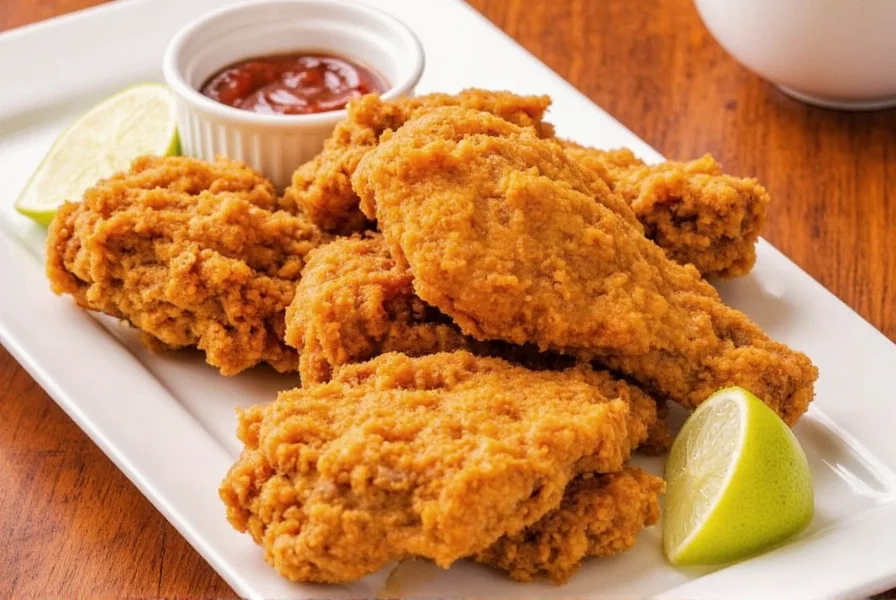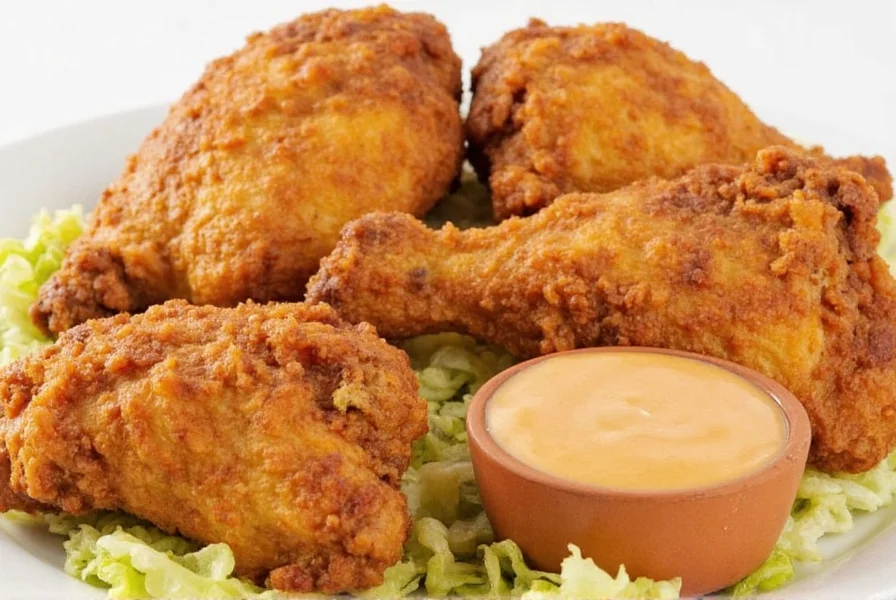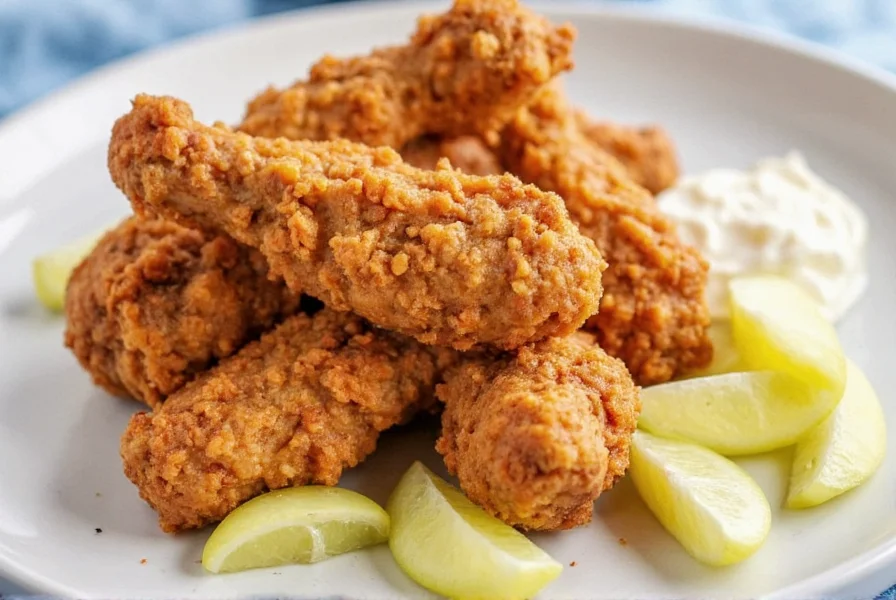Ingredients
- 4 cups full-fat cultured buttermilk
- 1 tbsp salt
- 1 tsp black pepper
- 1 tsp garlic powder
- 2 lbs bone-in, skin-on chicken thighs and drumsticks
- 2 cups all-purpose flour
- 2 tbsp paprika
- 1 tbsp onion powder
- 1 tsp cayenne pepper
- 1 tsp celery salt (optional)
- Vegetable or peanut oil for frying
Prep Time: 10 mins | Cook Time: 15 mins | Total Time: 8-24 hours (brining)
Servings: 4-6
Step-by-Step Guide to Making Buttermilk Brine Fried Chicken
- Prepare the chicken: Pat chicken dry with paper towels. Place in a large resealable bag or container.
- Make the brine: In a bowl, mix buttermilk, salt, black pepper, and garlic powder. Pour over chicken, seal, and refrigerate for 8-24 hours.
- Prepare breading station: In a bowl, combine flour, paprika, onion powder, cayenne, and celery salt. Set aside.
- Drain and dry chicken: Remove chicken from brine, shake off excess. Pat dry with paper towels for crispier skin.
- Dredge chicken: Coat each piece thoroughly in flour mixture, pressing gently to adhere.
- Heat oil: In a deep fryer or Dutch oven, heat oil to 350°F (175°C). Use a thermometer for accuracy.
- Fry chicken: Fry in batches for 12-15 minutes until golden brown and internal temperature reaches 165°F (74°C).
- Drain and rest: Place on wire rack to drain excess oil. Rest 5 minutes before serving.

Why Buttermilk Works So Well
Buttermilk's lactic acid gently breaks down proteins for tender meat, while its fat content locks in moisture. The tangy flavor balances frying oil richness, creating complex, non-greasy results.
| Traditional Salt Brine | Buttermilk Brine |
|---|---|
| Tenderizes through osmosis | Tenderizes via lactic acid + osmosis |
| Salt-heavy flavor | Complex, tangy, and savory flavor profile |
| Texture can be spongy | Texture is moist and slightly creamy |
| No dairy component | Contains natural fats that lock in moisture |
Spice Blends That Make It Special
- Southern Classic: Paprika, garlic powder, onion powder, celery salt, black pepper
- Korean-Inspired: Gochugaru, sesame seeds, ginger, soy sauce powder
- Tex-Mex Twist: Cumin, smoked paprika, dried oregano, chili powder
- Herbaceous: Dried thyme, rosemary, sage, parsley, lemon zest

Equipment Checklist for Perfect Results
| Tool | Purpose | Recommended Brand |
|---|---|---|
| Deep Fryer or Dutch Oven | Provides consistent oil temperature | Le Creuset, Lodge Cast Iron |
| Thermometer | Maintains ideal frying temp (350°F) | ThermoPro TP03 |
| Breading Station | Separates wet and dry ingredients | Any stainless steel bowls |
| Rack for Draining | Allows excess oil to drip off after frying | Wire cooling rack |
Buying Guide: Choosing Your Ingredients
- Buttermilk: Full-fat cultured buttermilk for best flavor and texture
- Chicken: Bone-in, skin-on thighs for maximum juiciness
- Oil: Canola, peanut, or vegetable oil (high smoke point)
- Flour: All-purpose flour mixed with cornstarch (3:1) for extra crispiness

Serving Suggestions & Pairings
- Classic Sides: Mashed potatoes, coleslaw, mac and cheese
- Sauces: Honey drizzle, hot sauce, ranch, or remoulade
- Beverages: Sweet tea, craft beer, or crisp white wine
Frequently Asked Questions
Can I use buttermilk substitute in the brine?
For authentic results, use cultured buttermilk. Milk + vinegar substitutes won't replicate the enzymatic action.
How long should I brine the chicken?
8-24 hours is ideal. Overnight brining ensures maximum tenderness without mushiness.
Why is my chicken not crispy?
Check oil temperature (must be 350°F), pat chicken dry before dredging, and avoid overcrowding the pan.
Can I bake instead of frying?
Yes! Place on a wire rack at 400°F for 45-55 minutes. Spray with oil for crispier results.











 浙公网安备
33010002000092号
浙公网安备
33010002000092号 浙B2-20120091-4
浙B2-20120091-4